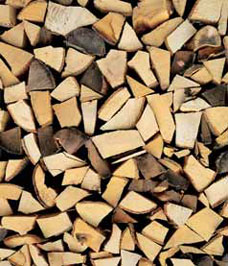Nature Pact

The Nature Pact is the name of a law passed by the Ministry of the Environment on 30 July 2021 to promote nature and biodiversity conservation in the municipalities. The municipalities are important partners of the state in the field of nature and resource conservation and are financially supported for their efforts.
The municipality of Roeser has been involved from the very beginning, i.e. since 28 October 2021, and has been committed to protecting nature and biodiversity ever since. With the Nature Pact, the state wants to provide the municipalities with a legal, financial, technical and advisory reference framework for the period from 2021 to 31 December 2030 to facilitate their targeted intervention in the field of nature conservation and against the loss of biodiversity.
The municipality of Roeser is committed to creating a liveable and natural environment for all citizens. The focus is on preserving and promoting the natural environment - from green spaces and forests to biodiversity diversity. The aim is to enable people and nature to live together in harmony and to ensure that future generations can also live and work in a healthy, attractive and nature-loving community.
Further development of the commitment of the municipality of Roeser:
www.pactenature.lu/de/acteur-engage/gemeinden/roeser
Mission statement
The municipality of Roeser has developed a clear mission statement for dealing with nature and the environment: At the centre of this is the responsibility to protect and preserve our natural resources and make them fit for the future. This mission statement forms the framework for our actions as part of the Nature Pact up to 2030 - a long-term commitment to the protection of biodiversity and the promotion of intact, vibrant nature in our municipality.
Our nature is more than just a backdrop - it is a habitat, a retreat, a recreational area and the basis for health, well-being and quality of life. The preservation of these values is firmly anchored in the self-image of the municipality of Roeser. With our mission statement, we are committed to taking responsibility - for today's citizens as well as for future generations.
Key elements of the mission statement have been defined for the municipality of Roeser, which are to be achieved by 2030:
Protecting and promoting biodiversity: the municipality is actively committed to preserving native animal and plant species, protecting their habitats such as the Natura 2000 area around the Alzette river and thus preserving ecological connections.
Enhancement and maintenance of near-natural areas: Existing natural areas such as forests, meadows, hedges, bodies of water and orchards should be preserved, maintained and - where possible - ecologically enhanced.
Sustainable land use: Avoiding concrete islands as squares and upgrading green spaces in residential areas, public squares or private spaces in the interests of nature and making them climate and biodiversity-friendly.
Environmental education and participation: The keyword here is the nature pact team, which is made up of citizens of the municipality, among others, and is committed to raising awareness of the importance of nature. Furthermore, cooperation with schools, associations, farmers, the forester and other local stakeholders is to be further promoted and intensified.
- Future-orientated action: Our mission statement is based on the idea of sustainability. It is intended to ensure that future generations can also experience an intact environment and continue to live and work in a community worth living in.
With this mission statement, the municipality of Roeser is setting a clear direction until 2030 and beyond: The protection and appreciation of nature and biodiversity are an integral part of our municipal identity and the basis for a future worth living, including through more greenery in settlement areas, e.g. along roads.
Naturpaktteam - Nature Pact working group
The task of this working group is to increase the information and awareness of citizens through annual actions in the areas of nature, environmental protection and biodiversity conservation and to participate in the implementation of the measures of the Nature Pact. The college of aldermen and/or the municipal council make the decisions on the implementation of these measures.
The team is made up of the local forester, a representative of the college of aldermen (usually the environmental alderman) and the SICONA Nature Pact advisor as well as committed citizens and municipal employees. The SICONA nature conservation syndicate advises us on the implementation of the Nature Pact.
Green Events
Green events are sustainable events that can be organised by associations or municipalities in Luxembourg. This event must fulfil a checklist of criteria.
Further information: www.greenevents.lu
The Oekocenter Pafendall offers support and guidance in the organisation of such an event: Tel: 43 90 30 22 or email: emweltberodung@oeko.lu
As part of Environment Week 2025, the municipality of Roeser has organised two events in accordance with the Green Event criteria.
In addition, the municipality's environmental service is available for questions and concerns relating to green events.
Gilles Lang

Léo Metz

Méi net am Mee Campaign
Let the grass grow and help pollinators!
SICONA, SIAS and the nature parks are calling for the "Méi net am Mee" initiative
What are the rules of the game?
The rules of the game are simple: don't mow in May. You don't have to let the whole lawn grow either, but some of it will be a nice contribution for the insects.
And how does this help pollinators?
The longer the mower remains silent in spring, the greater the chances of survival for animals that hibernate on the ground or on blades of grass. What's more, wild grasses can take hold in a late-mown meadow. Clearcut grassland offers no habitat for insects and is not adapted to climate change.
You can send photos of your garden to moien@sias.lu to enter the competition.
You can also share your photos on social media using #BlummefirBestëbser.
The municipality of Roeser is also taking part and will not be mowing all the plots in May.

Nesting boxes
As part of the Nature Pact, a campaign was held in Kolla Park on 30 April 2025 in fine weather with citizens, the Nature Pact team and the Environment and Climate Commission, during which nesting boxes and dormouse boxes were hung up.
What are nesting boxes?
Nesting box: A nesting box (also known as a nesting aid) is an artificial breeding site, usually made of wood, for birds or other animals such as bats or wild bees. They replace natural nesting opportunities that are often lost due to modern construction methods or intensive forestry and agriculture. When installing them, make sure that they are hung from trees or walls at a height of around two to three metres, either with rustproof aluminium nails as in our case or with sturdy wire brackets that do not damage the tree. They should face east or south-east, i.e. not in full sunlight. They must also not be tilted backwards so that rain cannot penetrate. As in our case, we put up two types of nest box, one with a diameter of 27 mm and one with a diameter of 32 mm, intended for different bird species such as small tits (27 mm) and great tits or pied flycatchers (32 mm). The nest boxes of the same design should be at least 10 metres apart, the nest boxes of different designs at least 3 metres apart. The nest boxes do not necessarily have to be cleaned annually, cleaning every 2-3 years is sufficient.
Dormouse boxes: These are special nesting boxes for dormice, small nocturnal rodents such as fat dormice, garden dormice or even hazel dormice. The same criteria apply for installation as for classic nesting boxes. The difference is that the hole (usually at the side or back) points towards the tree, as the animals climb into the boxes from the trunk for better camouflage. Should be hung on hedges or near woodland, but is not absolutely necessary.
At the same time, bat boxes were installed on the scout building and the former music hall.
A total of 11 nesting boxes were put up during our campaign, 5 of them with a diameter of 27 mm and 6 with a diameter of 32 mm. In addition, 7 dormouse boxes were hung in Kolla Park (see map). The whole campaign was characterised by a good atmosphere and was fun for everyone involved.


Wasp nests
Useful information about wasps
If you need help, please contact the wasp counselling service, which will provide you with competent and knowledgeable support:
- natur & ëmwelt (Tel: ) berodung@naturemwelt.lu
- Emweltberodung Lëtzebuerg (Tel: )
- Environmental department of the municipality, Mr Léo Metz (Tel: )
Indigenous or tropical wood with FSC and PEFC certification
 On April 18, 2005, the local council passed a resolution on the use of indigenous or tropical timber with FSC certification for municipal projects, which reads as follows:
On April 18, 2005, the local council passed a resolution on the use of indigenous or tropical timber with FSC certification for municipal projects, which reads as follows:
The relevant departments of the municipal administration will be advised to comply with this decision for municipal projects and day-to-day decisions.
With the resolution of 6 November 2023, the municipal council adopted the resolution on the use of sustainable forestry, fair treatment of people and long-term resource use with PEFC label certification with the following objectives:
- Introduction of sustainable forest management, taking into account ecological, economic and social factors
- Support and promote forestry and wood as a material to consumers
- Involve all forest owners through equal access
- Ensure a robust and ethical certification system for the management of our forests
In order to achieve these goals and the associated targets, the municipality is committed to implementing sustainable forest management practices within its property (291.63 ha).
PEFC (Programme for the Endorsment of Forest Certification) is the world's largest independent certification system for sustainable forestry. Wood and paper products with the PEFC seal are proven to originate from ecologically, economically and socially sustainable forest management.
navigation sur le site
Useful links for your daily life
Contact & Opening Hours